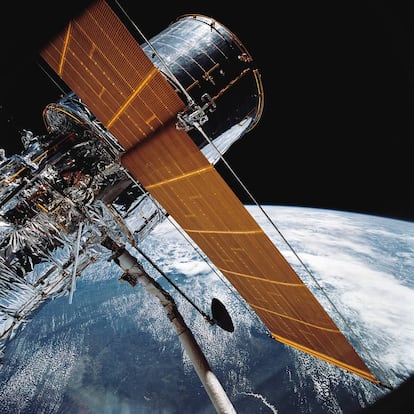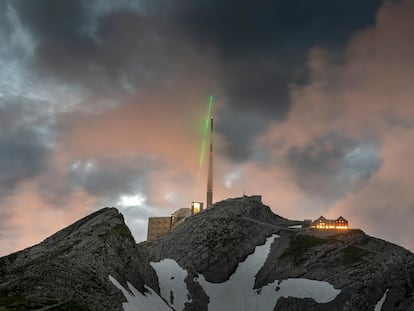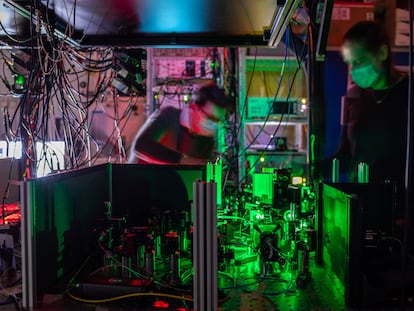What are those giant telescopes looking at?
The process of defining the scientific objectives of these large observatories is complex and comprehensive

The main goal of building a celestial observatory and launching it millions of miles from Earth or placing it atop our highest mountains is simple – to understand the universe and our place in it. But where do we begin such a sublime task, and where do we point our telescopes so we can unravel these great mysteries?
The skies that are observed through professional telescopes are dauntingly vast. Remember, in many cases the instruments are used to magnify an area, to zoom in on an object. Consider one of the most iconic photos taken by the Hubble Space Telescope – the Earendel star. This one image took 10 days of telescope time. To observe all of the heavens above would take a whopping 900,000 years. Obviously, not an option. Decisions must be made about where and for how long to point these telescopes. To be efficient, we have to be smart.
Well then, how does one decide what is important? Specifically, how does one decide the most important and the most urgent problem to solve when using scarce resources like telescope time? The decision-making process used by almost all major international observatories involves the participation of the entire scientific community. First, the observatories choose experts from the astronomy community to serve as judges on an evaluation panel. These individuals must demonstrate their integrity by divulging any conflicts of interest that might skew the process, and in many cases remain anonymous.
The broader astronomy community is then invited to submit proposals. Ground-based observatories, such as Roque de los Muchachos or La Silla in Spain, typically do this twice a year, in the fall and in the spring. Space-based observatories like the Hubble Space Telescope (HST) or the James Webb Space Telescope (JWST) do it once a year. When these dates approach, it’s best not to ask an observational astronomer anything, because they are all fully absorbed in a frenzy of calculations, estimations, communications with colleagues and discussions that leaves little time for anything else. For example, observational astronomers won’t be getting much sleep this month until after the JWST proposal deadline on January 27. To be competitive, a proposal must be clear, ambitious, appealing, scientifically viable, and capable of answering an important question. Despite the professional nature of the task, the vast majority of proposals are submitted right before the deadline. Astronomers are also human, even if they are focused on other-worldly pursuits.
The panel of judges reviews the proposals and ranks them according to the significance of the science and the observatory’s suitability to the task. The judges write their reports independently and are not allowed to review their own proposals or those submitted by close collaborators. This produces a list of winning proposals – typically only one in 10 or 12 proposals is selected. The winning proposals specify how and for how long the telescope will focus on specific regions of the sky that will advance our knowledge.
Even though the process has been refined over the years and has proven to be effective, it still has some intrinsic biases. Some are measurably obvious – selection processes do not favor women and young researchers. The process depends heavily on the integrity of the selection panel members. The observatories take great pains to choose judges, and disqualify anyone who has submitted a competing proposal.
A few years ago, the US National Aeronautics and Space Administration (NASA) instituted a double-blind review system that does not reveal the names of the proposal authors or the judges. The objective was to try and mitigate the conscious and unconscious biases we all have, despite the scientific dedication to noble rationality and objective measurement. Perhaps it’s the nature of their work that causes the scientific community’s reluctance to recognizing its own human irrationality. Double-blind review processes have proven successful in reducing gender and other biases during the evaluation of proposals to use NASA’s space telescopes. Some of the most successful proposals in recent years have come from astronomers who had never received observation time in the past.
This is how observatories ensure the quality of the science produced by their telescopes and the process used to award time last year on the JWST (6,000 hours available), the HST (3,000 orbits available), and the GRANTECAN (180 nights available) telescope on La Palma in Spain’s Canary Islands. Astronomers will be looking at planets, accretion disks, galaxies, supermassive black holes, active galactic nuclei, asteroids, comets and more – things that will help us understand the universe a little better, and perhaps our place in it.
Sign up for our weekly newsletter to get more English-language news coverage from EL PAÍS USA Edition
Tu suscripción se está usando en otro dispositivo
¿Quieres añadir otro usuario a tu suscripción?
Si continúas leyendo en este dispositivo, no se podrá leer en el otro.
FlechaTu suscripción se está usando en otro dispositivo y solo puedes acceder a EL PAÍS desde un dispositivo a la vez.
Si quieres compartir tu cuenta, cambia tu suscripción a la modalidad Premium, así podrás añadir otro usuario. Cada uno accederá con su propia cuenta de email, lo que os permitirá personalizar vuestra experiencia en EL PAÍS.
¿Tienes una suscripción de empresa? Accede aquí para contratar más cuentas.
En el caso de no saber quién está usando tu cuenta, te recomendamos cambiar tu contraseña aquí.
Si decides continuar compartiendo tu cuenta, este mensaje se mostrará en tu dispositivo y en el de la otra persona que está usando tu cuenta de forma indefinida, afectando a tu experiencia de lectura. Puedes consultar aquí los términos y condiciones de la suscripción digital.
More information
Archived In
Últimas noticias
Most viewed
- Oona Chaplin: ‘I told James Cameron that I was living in a treehouse and starting a permaculture project with a friend’
- Sinaloa Cartel war is taking its toll on Los Chapitos
- Reinhard Genzel, Nobel laureate in physics: ‘One-minute videos will never give you the truth’
- Why the price of coffee has skyrocketed: from Brazilian plantations to specialty coffee houses
- Silver prices are going crazy: This is what’s fueling the rally











































